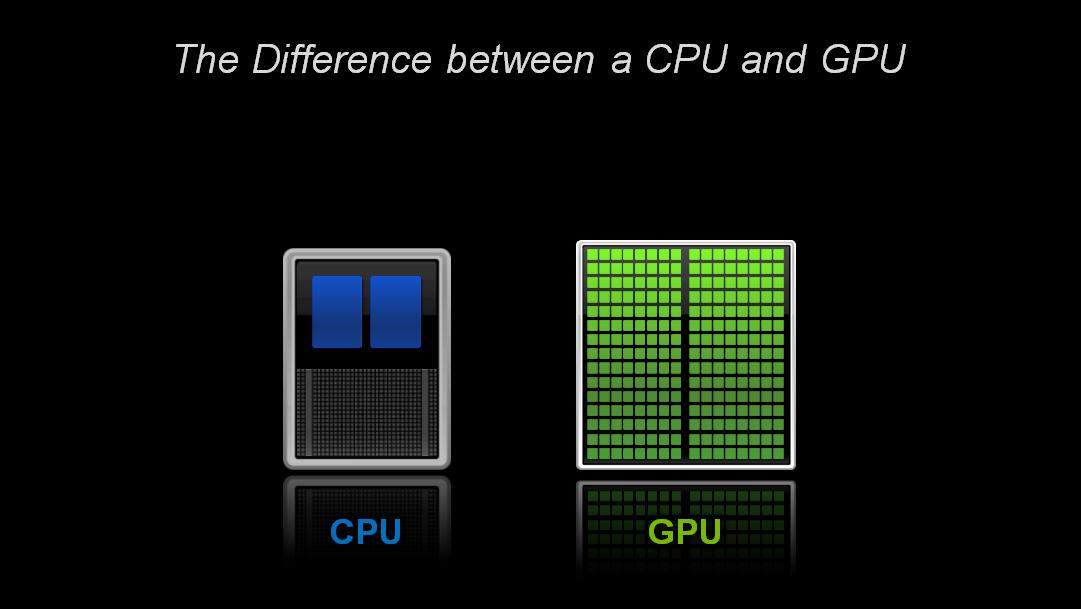
Computers are complex machines composed of multiple integrated hardware systems. Two components fundamental to the functioning of a computer are the brain—the central processing unit (CPU)—and the soul—the graphics processing unit (GPU). The CPU and the GPU communicate with each other to accomplish basic and complex tasks.
- General Processor vs. Special Processor
The CPU serves as the general purpose processor for most computational functions—basic arithmetic, logical, control, and input/output operations specified by the instructions. The GPU acts as a special purpose processor that renders the display images to monitors. It is optimized for calculations commonly and repeatedly required for computer graphics and SIMD (single instruction, multiple data) operations.
- Speed
Both pieces of hardware perform the same kind of task—they receive a problem and solve it at incredible, but different, speeds. This difference in speed represents a fundamental distinction in the optimization of the two processing units—CPUs are latency optimized while GPUs are bandwidth optimized. In other words, when given the same task of transporting data from point A to B, the CPU can very quickly fetch some memory data in the RAM, while GPUs are much slower at doing the same task (much higher latency). However, the CPU can only transport small amounts of data at a time while the GPU is able to fetch much more memory at once. So in other words, the main memory bandwidth of GPUs is much faster than the main memory of CPUs. The best CPUs have about 50GB/s while the best GPUs have 750GB/s.
- Core Power
Another difference between a CPU and GPU is in the architecture, as described by the number of cores each has, each of which allows a new problem to be solved simultaneously. The CPU is composed of just a few cores with lots of cache memory that can handle a few software threads at a time—a single core can perform one single task at a time. In contrast, a GPU is composed of hundreds of cores that can handle thousands of threads simultaneously. The ability of a GPU with 100+ cores to process thousands of threads can accelerate some software by 100 times over a CPU alone. What’s more, the GPU achieves this acceleration while being more power and cost-efficient than the CPU.
Today, most computers have both types of processing units, which can deliver the best value of system performance, price, and power. Computers that are used for design and image processing extensively rely on computer graphics, and the calculations involved are numerous and must be done in real time, justifying the need for a GPU. By contrast, basic functions like web browsing and word processing can be sustained through video cards integrated within the motherboard. By having at least one of each, one gains parallelism and greater performance from the computer system.
Advertisement
Learn more about Electronic Products Digital





